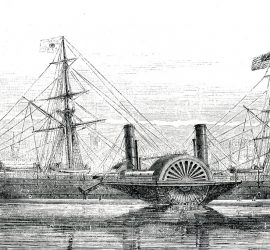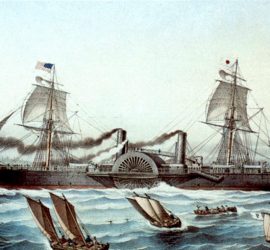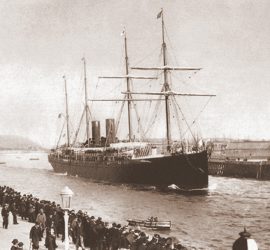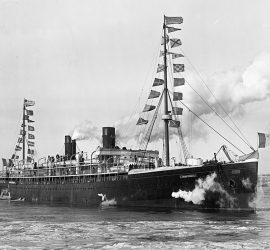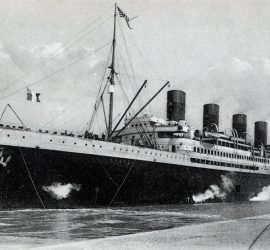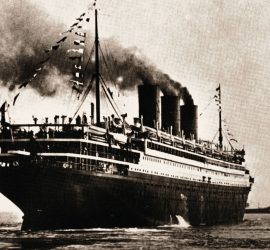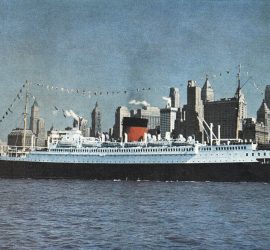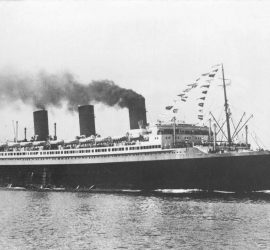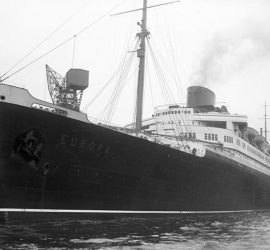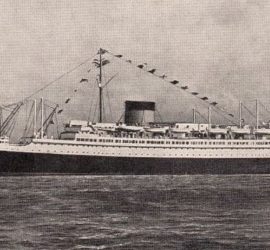1864 – 1899 / Originally a paddle-steamer, the Compagnie Générale Transatlantique’s Washington was refitted in 1868 and became the first twin-screw liner on the North Atlantic run.
french line
1865 – 1895 / Also known as Atlantique and Amerique / An early vessel of the CGT, this French paddle-wheeler was eventually refitted with a single propeller.
1883 – 1911 / Also known as Ville de New York and La Normandie / Although never a record-breaker, the Normandie made the CGT competitive in terms of speed. She remained with the French Line for her entire career until she was cut up.
1891 – 1923 / While not the largest or fastest ship of her time, the French Line’s La Touraine was known for her comfort, and enjoyed great popularity. She served in World War I and survived, but was sent to the scrappers when newer ships made her obsolete.
1912 – 1935 / As the only French liner to sport four funnels, the second France was also noteworthy for her lavish interiors. She survived World War I, serving as an auxiliary cruiser, a troop transport and a hospital ship.
1921 – 1947 / Another CGT masterpiece, the Paris followed the company line in offering comfort and amenities rather than speed. Unfortunately, she suffered fires two times in her life, the second of which led to her capsizing in port shortly before World War II.
1924 – 1962 / Also known as Empress of Australia (II) and Venezuela / Built as a smaller, less glamorous ship of the French Line, De Grasse was captured by Germany during WWII. Returned to her original owners after the war, she was later sold to Canadian-Pacific Line. Her final years was spent as an Italian ship on the South American run.
1927 – 1959 / Ushering in a new era, Île de France catapulted to stardom when she introduced Art Deco on the North Atlantic in 1927. Showcasing all the best France had to offer, she was a ship of state in every sense of the word.
1930 – 1962 / Also known as Liberté / Also a Blue Riband champion, the Europa enjoyed a longer career than her sister Bremen. After World War II, she was handed over to the French and became the much-loved Liberté. In this guise, she sailed into the 60s.
1930 – 1938 / Although a less glamorous ship of the French Line, the Lafayette was still known for her comfort and modern design. Unfortunately, her career was cut short by fire in 1938.

